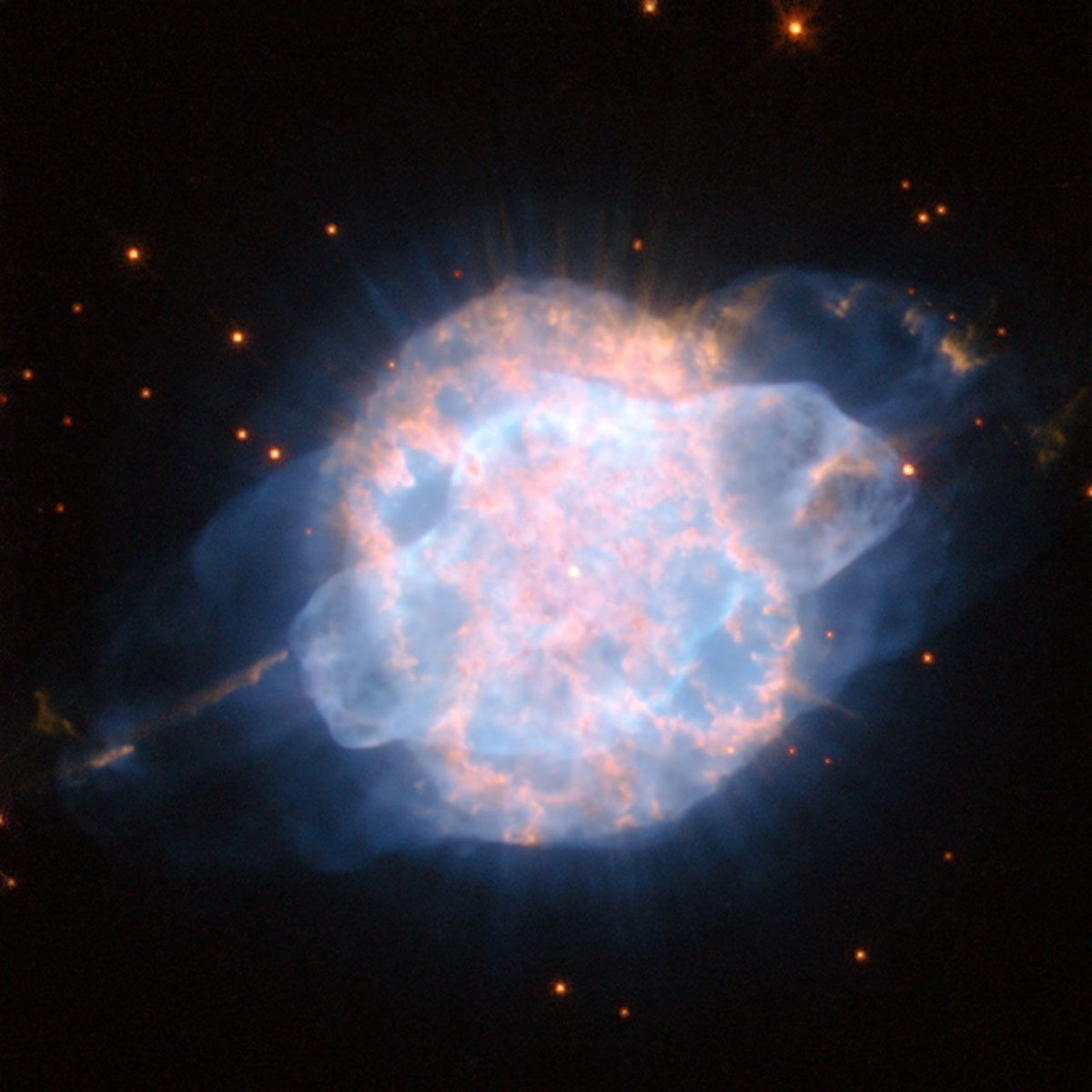The Hubble telescope has captured a spectacular image of a cloud of gas billowing in the constellation Centaurus. A tiny red dot pierces the center of the colorful bubble—a relic of the dying giant at the heart of planetary nebula NGC 3918.
Red giants are luminous stars that have used up the store of hydrogen at their cores. Instead, they produce the gas by thermonuclear fusion in their cooler, reddish shells.
Eventually, a white dwarf will spring from the bright cloud of gas as the star ejects more and more gas from its surface, NASA explained in a statement accompanying the image.
White dwarfs are the hot, dense remnants of a star's core. They have a mass like that of our sun, but they're only about the volume of Earth. Most stars enter the final stages of their lives as white dwarfs. With no new fusion, the stellar remnants slowly lose heat, turn red and—in theory—may eventually go black. But some white dwarfs explode into stunning supernovas.
NGC 3918 hasn't reached this white dwarf stage. It has an eye-like shape in the Hubble image, with a bright inner balloon of gas and a sparser outer shell. Although these layers appear distinctive, they're not the result of two seperate emissions of gas, the NASA statement reported. Formed in unison, they are moving from their parent star at different speeds, scientists believe.
Jets of gas spew from the ends of the object as fast as 217,500 miles per hour, astronomers think. Dynamic, billowing nebulae like NGC 3918 survive for just a few tens of thousands of years, NASA reported. That's barely the blink of an eye in a universe about 13.8 billion years old.
The Hubble telescope has been producing beautiful images of space for almost three decades. Launched into orbit around Earth in 1990, this space spy takes high resolution shots of the universe using instruments that can see across much of the electromagnetic spectrum. This particular picture was created by merging near infrared and visible images.

Its first-ever image wasn't quite as stunning as the snaps we are used to today. Binary star HD96755 in the open cluster NGC 3532 appears as a grainy gray-and-white dot on charcoal background, Time magazine reported previously. But even this early image was superior to those captured by telescopes on the ground.
A problem with a mirror on Hubble would eventually be fixed in 1993, helping astronomers to make better use of its impressive capabilities. The space telescope does far more than produce pretty pictures. This giant space camera helps scientists estimate how fast the universe is expanding, for example. You can find out what the telescope is up to right now at spacetelescopelive.org.
Uncommon Knowledge
Newsweek is committed to challenging conventional wisdom and finding connections in the search for common ground.
Newsweek is committed to challenging conventional wisdom and finding connections in the search for common ground.
About the writer
Katherine Hignett is a reporter based in London. She currently covers current affairs, health and science. Prior to joining Newsweek ... Read more
To read how Newsweek uses AI as a newsroom tool, Click here.








